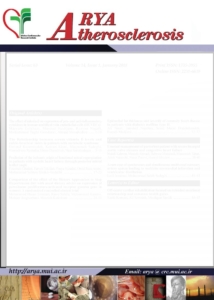Carotid intima-media thickness and plasmafibrinogen among subjects with metabolic syndrome: Isfahan cohort study
Authors
Affiliations
Abstract
Background: The role of plasma fibrinogen, a key regulator of inflammation processes and increased carotid intima-media thickness (cIMT) to predict metabolic syndrome (MetS) is currently under investigation. We assessed differences in the indicators of cIMT and also plasma fibrinogen level between MetS and non-MetS subjects. We also assessed the role of these two parameters for independently relationship with MetS state.
Methods: The subjects in this cross-sectional survey were population-based samples of 93 men and women aged ≥ 35 years and over who were selected from the Isfahan cohort study, Isfahan, Iran. Fibrinogen was measured by the clotting assay of Clauss. Ultrasound studies of the carotid artery were performed to measure cIMT. MetS defined based on the National Cholesterol Education Program’s Adult Treatment Panel III.
Results: The mean level of plasma fibrinogen was not different in the two groups with and without MetS (240.10 ± 27.80 vs. 242.56 ± 35.82, P = 0.714), but the mean of cIMT was considerably higher in MetS group than in non-MetS group (0.85 ± 0.06 mm vs. 0.66 ± 0.09 mm, P < 0.001). Using a multivariable logistic regression model, high cIMT could effectively predict MetS state with the presence of different components of MetS (odds ratio = 17.544, 95% confidence interval = 2.151-142.860, P = 0.008). The optimal cutoff point of cIMT for discriminating these two clinical states was 0.6 mm yielding a sensitivity of 61.5% and a specificity of 59.6%. Conclusion: Individuals with MetS demonstrated increased cIMT values compared with those without MetS. However, high plasma fibrinogen level may not be associated with MetS state.
Keywords: Carotid Intima-Media Thickness; Fibrinogen; Metabolic Syndrome; Prediction.
How to Cite
. 2014 Sep;10(5):238-43. PMID: 25477980.

